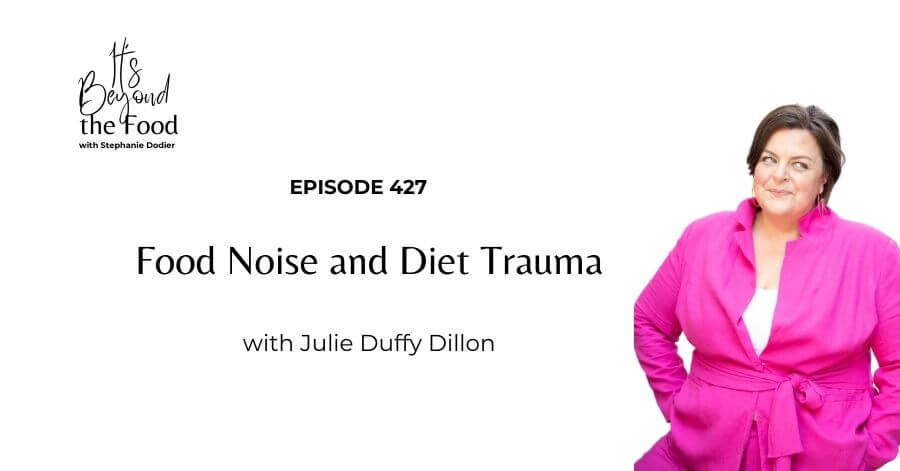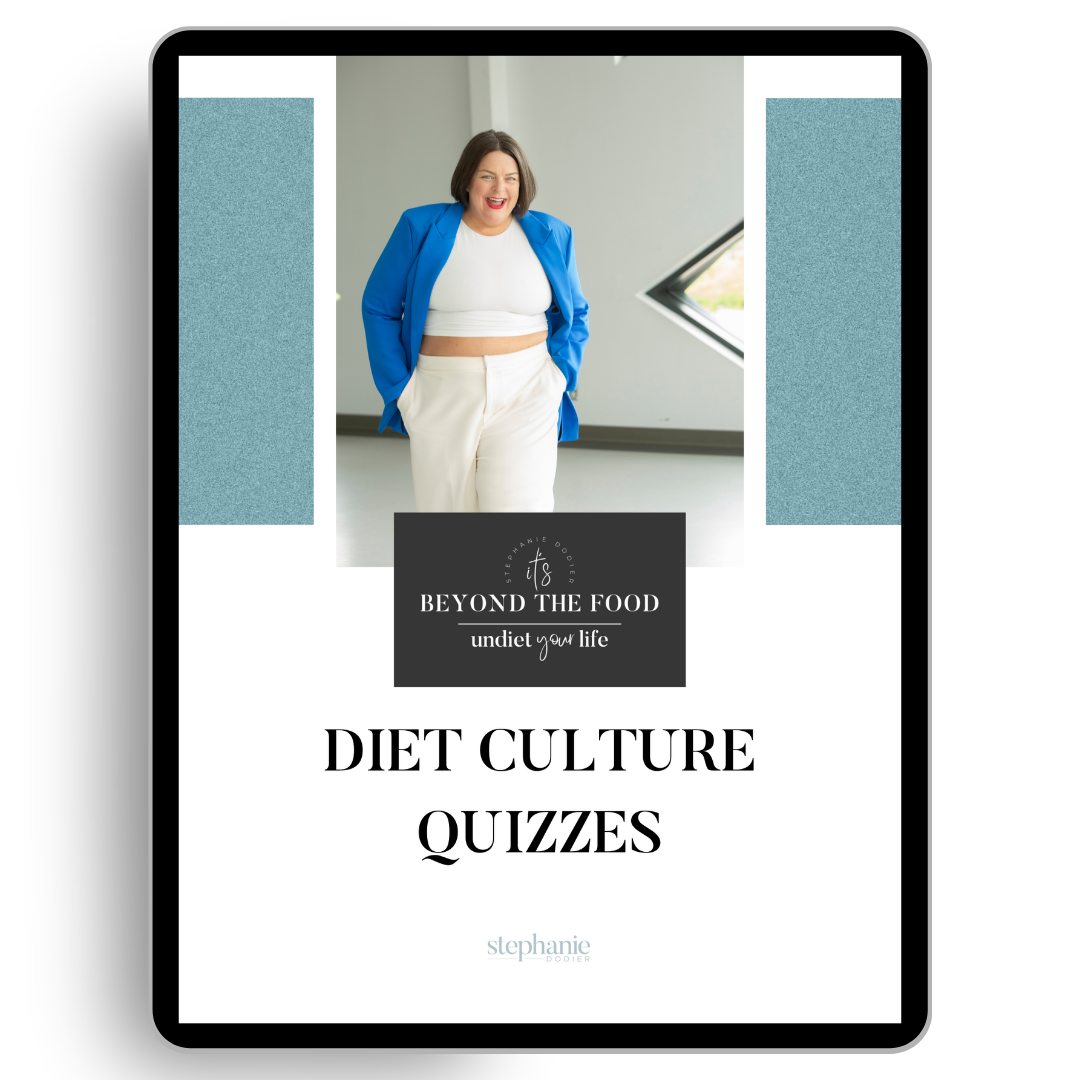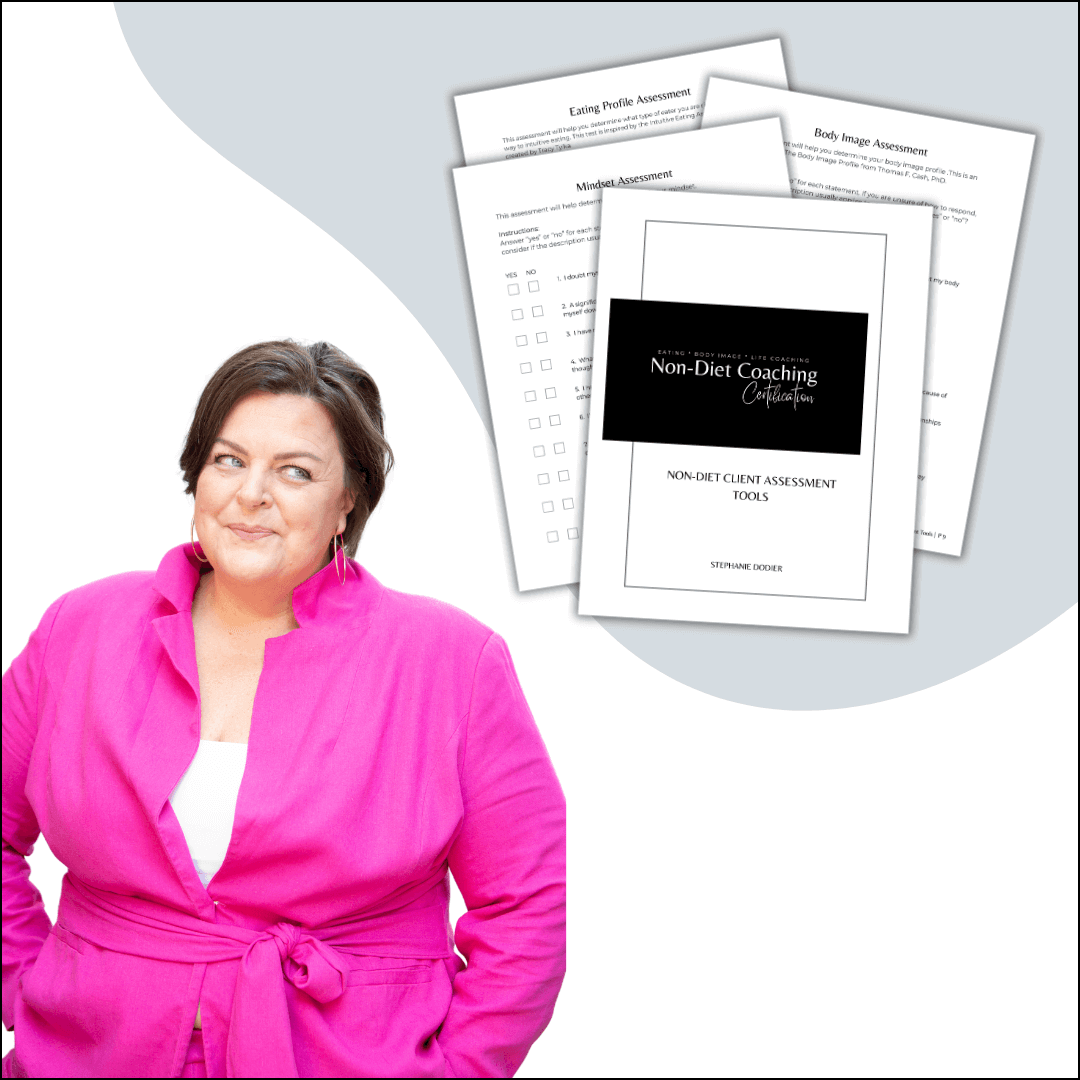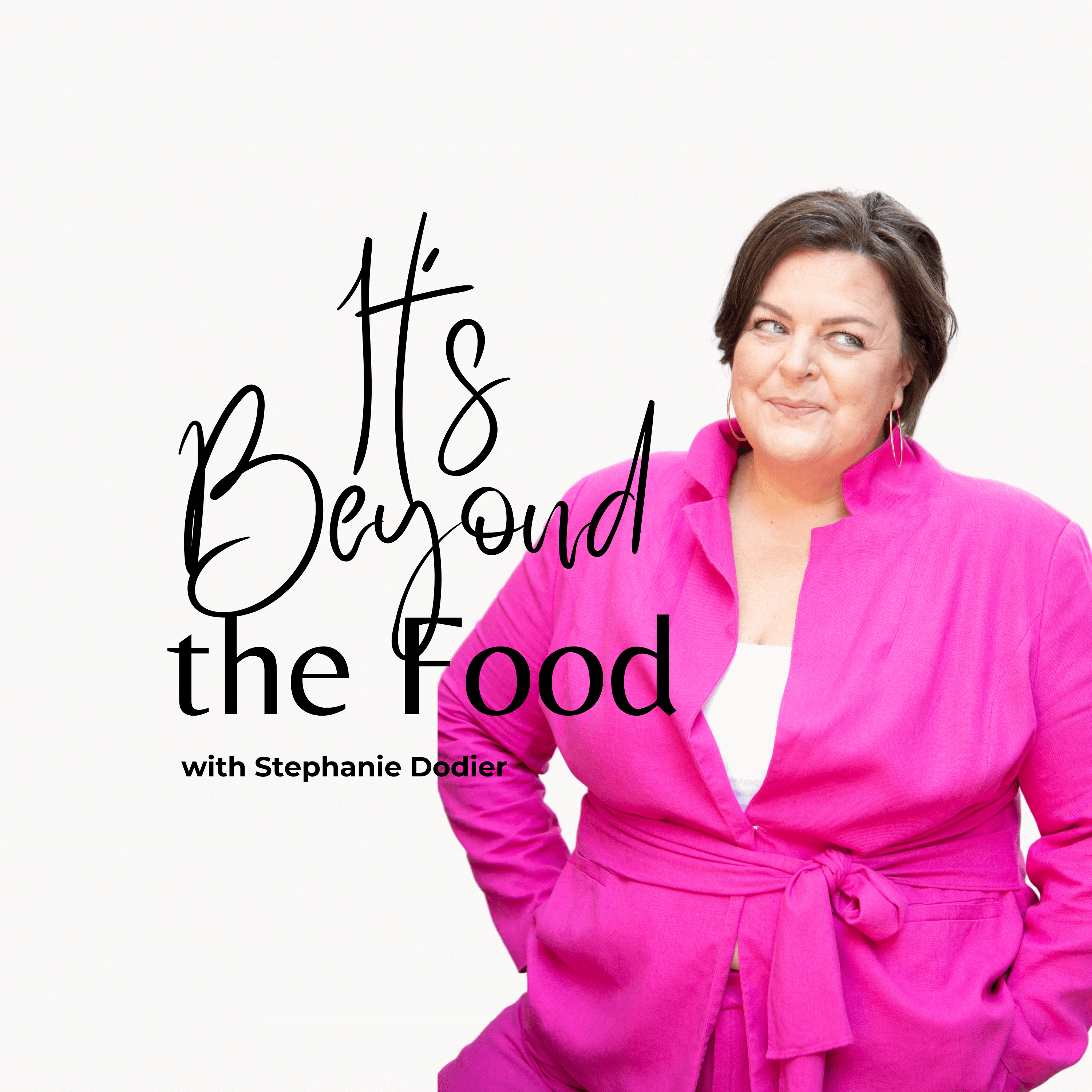
When we hear the phrase “food noise,” many now think of GLP-1 medications. But food noise isn’t new to us.
In the non-diet nutrition world, we’ve been talking about food thoughts, food voices, and food noise for years. We just haven’t always called it that.
In this episode of the It’s Beyond the Food podcast, I welcome back my friend and colleague, Julie Duffy Dillon. She’s a non-diet dietitian, therapist, and now, published author of the new book Find Your Food Voice.
Together, we explore the deeper roots of food noise and how diet trauma keeps clients stuck in survival mode. This conversation is an invitation for all practitioners to rethink how we support clients dealing with food noise—especially without jumping to GLP-1s.
What is Food Noise?
Food noise is the mental chatter that keeps clients preoccupied with food choices, guilt, restriction, and control.
According to a 2023 study in Nutrients, food noise stems from two primary causes:
Internal cues like hunger, satisfaction, and food thoughts
External cues such as diet culture, societal pressure, and environmental triggers
The rise of GLP-1s frames food noise as a “biological flaw.” But what if that noise is actually a response to harm?
Diet Trauma as the Missing Link
Julie and I both agree: for many people, food noise is not a flaw. It’s a symptom of diet trauma.
In her book and this episode, Julie explains how repeated dieting disconnects us from internal signals. The constant restriction and failure narrative create shame, fear, and distrust in our bodies.
This trauma doesn’t vanish just because we stop dieting. It lingers and shapes how we relate to food today.
Julie calls this the “suitcase” clients carry into our offices. It’s heavy, hidden, and full of unspoken pain. As practitioners, we can’t ignore it—we have to help them unpack it.
Rebuilding Food Voices with Compassion
Julie’s approach is rooted in compassion, flexibility, and client-centered care.
She redefines the food voice as an inner compass we’re all born with. It’s the internal system that helps us know when and what to eat. But trauma and social pressures block access to that voice.
Here’s what we must remember:
Every client’s food voice is unique
Some clients (especially neurodivergent folks) may need external cues or structured support
Intuitive eating isn’t a rulebook—it’s a framework to adapt
Healing doesn’t require kale. It requires safety.
When Healing Comes Before Nutrition
Julie shares something I also hold true: healing must be the priority—not weight loss, and not perfect nutrition.
For some clients, eating a salad might be too triggering. And that’s okay. Healing means allowing space for that truth without shame.
We talk about the importance of permission. Not just to eat, but to eat enough—without rules, moral judgment, or rigid expectations. Only then can clients begin to rebuild trust in their bodies and quiet the noise.
Food Noises and Diet Trauma: The Problem with How We Teach Intuitive Eating
We also explored how intuitive eating can become just another diet if we’re not careful. When professionals teach it rigidly, without accounting for access, privilege, or neurodivergence, we risk replicating harm.
This is why Julie’s book is so powerful. It brings the real voices of her clients into the conversation. Through letters, metaphors, and stories, she offers a human-centered approach that connects both practitioners and clients.
Naming Dieting as Trauma
One of the boldest parts of this conversation was naming dieting for what it is: trauma.
Julie compares it to oxygen deprivation. When we’re restricted, our brain reacts as if we’re in danger. Even when food becomes available again, our brain stays on high alert.
That’s food noise. And it’s not solved by self-discipline or medication alone. It’s healed through validation, safety, and trust.
You Can Support Clients Without More Rules
If you’re a health professional, this episode is for you.
It will help you see food noise through a new lens. It will remind you to slow down, trust the process, and center healing in your client work.
What You’ll Learn in This Episode on Food Noises and Diet Trauma:
- Why food noise is often a symptom of diet trauma
- How to help clients reconnect with their food voice
- Why intuitive eating must be adapted—not prescribed
- What it means to prioritize healing over nutrition
Mentioned in the show:






